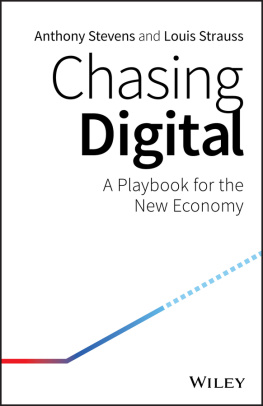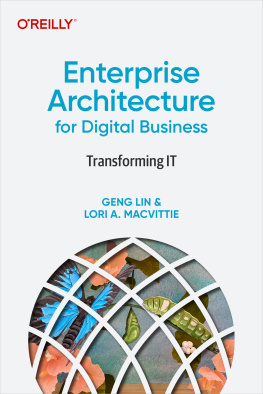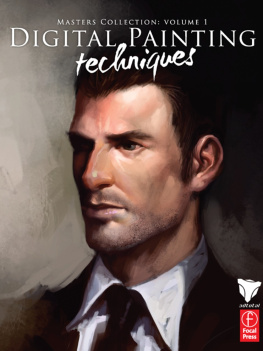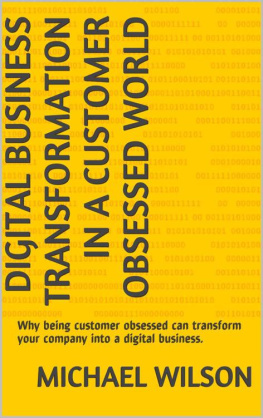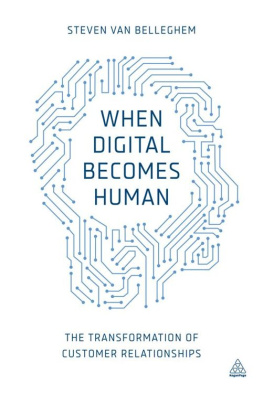
Table of Contents
Guide
Pages
Digital Humans
Thriving in an Online World
Paul Ashcroft
Garrick Jones

This edition first published 2022.
Copyright 2022 by Paul Ashcroft and Garrick Jones. All rights reserved.
All rights reserved. No part of this publication may be reproduced, stored in a retrieval system, or transmitted, in any form or by any means, electronic, mechanical, photocopying, recording or otherwise, except as permitted by law. Advice on how to obtain permission to reuse material from this title is available at http://www.wiley.com/go/permissions.
The right of Paul Ashcroft and Garrick Jones to be identified as the authors of this work has been asserted in accordance with law.
Registered office
John Wiley & Sons, Inc., 111 River Street, Hoboken, NJ 07030, USA
John Wiley & Sons Ltd, The Atrium, Southern Gate, Chichester, West Sussex, PO19 8SQ, United Kingdom
Editorial Office
John Wiley & Sons Ltd, The Atrium, Southern Gate, Chichester, West Sussex, PO19 8SQ, United Kingdom
For details of our global editorial offices, customer services, and more information about Wiley products visit us at www.wiley.com.
Wiley also publishes its books in a variety of electronic formats and by print-on-demand. Some content that appears in standard print versions of this book may not be available in other formats.
Designations used by companies to distinguish their products are often claimed as trademarks. All brand names and product names used in this book are trade names, service marks, trademarks or registered trademarks of their respective owners. The publisher is not associated with any product or vendor mentioned in this book.
Limit of Liability/Disclaimer of Warranty
While the publisher and authors have used their best efforts in preparing this work, they make no representations or warranties with respect to the accuracy or completeness of the contents of this work and specifically disclaim all warranties, including without limitation any implied warranties of merchantability or fitness for a particular purpose. No warranty may be created or extended by sales representatives, written sales materials or promotional statements for this work. The fact that an organization, website, or product is referred to in this work as a citation and/or potential source of further information does not mean that the publisher and authors endorse the information or services the organization, website, or product may provide or recommendations it may make. This work is sold with the understanding that the publisher is not engaged in rendering professional services. The advice and strategies contained herein may not be suitable for your situation. You should consult with a specialist where appropriate. Further, readers should be aware that websites listed in this work may have changed or disappeared between when this work was written and when it is read. Neither the publisher nor authors shall be liable for any loss of profit or any other commercial damages, including but not limited to special, incidental, consequential, or other damages.
Library of Congress Cataloging-in-Publication Data is Available:
ISBN 9781119879725 (hardback)
ISBN 9781119879732 (ePub)
ISBN 9781119879749 (ePDF)
Cover Design: Wiley
Cover Image: spainter_vfx/Getty Images
For Zsanett, Benjamin, Leanne, Georgia, Leila, and Emma
ACKNOWLEDGEMENTS
We would like to thank Annie Knight, Corissa Hollenbeck, Deborah Schindlar, and the team at Wiley who have been so great to work with.
We would like to thank the entire Ludic team without whom we would not be able to row our boats into such interesting ports and learn so much from our adventures together.
We also thank all our friends and clients who have worked, laughed, and cried together with us over the years, as we have brought new things to life, in particular Chris Meyer, Ella Bennett, Simon Brown, Marce Cancho Rosado, Sergio Martinez-Cava Camacho, and Juan Luis Moreno Bau.
Paul especially thanks Zsanett, Benjamin, and Leanne for their love and invaluable support during the weeks and months of being immersed with him in the wonderful world of writing.
Garrick would also like to thank Zsanett for her patience and understanding, along with Michael Uys, Michael Craig-Martin, and Francesco Manacorda for the inspiring conversations and their support.
ABOUT THIS BOOK
This book is about the impact of digital on us as individuals and how we organize together to get things done. It is also about what we have learned, in terms of how to make the most of all that digital has to offer whilst avoiding its pitfalls.
The book consists of our understanding of the context of digital humans what is happening and how we understand it. We identify 23 trends that we believe are important to pay attention to. We have researched what primary research is already starting to tell us about what we have learned through the global pandemic. We look at 12 fundamentally new ways that we believe are impacting digital humans and their organizations.
The original version of this book's research was printed before the huge global experience of the pandemic. We have sought to understand the shifts that took place for organizational survival. The conditions of economies grinding to a halt and people being kept at home meant that the only way economies could survive was by adopting digital work. We have sought to update our research with what we have learned through this period and what we feel will be lasting in its impact.
The book is not intended to be an academic thesis or a technical manual. Instead, it is a document of what we have learned, our experiences, and the important principles we have synthesized through working in this way.
We have tried to avoid jargon and to write a book that everyone might find interesting and accessible. At the end of the book, we have included our terms of art. This provides our working definitions for the various technical terms that we use within the text.
It is, above all, a contribution to the conversation about our joint future, in the hope that we as humans will use the opportunities digital provides to create a future world in which we all want to live together.
INTRODUCTION
Our Digital Civilization
New technology has always propelled humans forward. Often, we are afraid of it. Take the invention of the steam train. When the Stockton to Darlington Railway, the first public steam railway, opened in 1825, people feared the worst: the human body wasn't designed to travel at the astonishing speed of 30 miles per hour and something dreadful would happen if it did (Britannica 2019). With the invention of the telephone, preachers in Sweden said the phone was an instrument of the devil (Ehrenkrona n.d.), causing phone lines to be stolen or sabotaged; others feared that telephone lines were channels through which evil spirits would enter our homes.
In his classic 1960s book, Understanding Media, Marshall McLuhan accurately predicted the rise of mass media and the global village. He described how The essence of automation technology is integral and decentralist in depth, just as the machine was fragmentary, centralist and superficial in its patterning of human relationships (McLuhan : 1).
Next page

